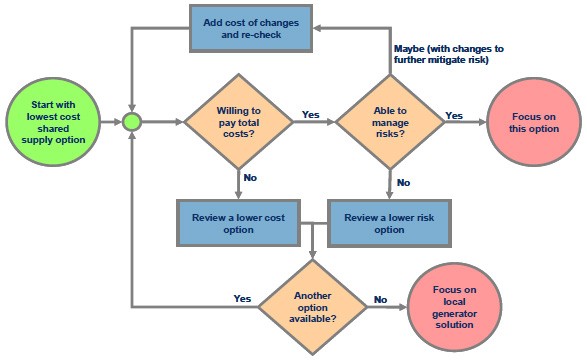Option Matters Options Combinations to Reduce Risk
Post on: 7 Июль, 2015 No Comment

Options Combinations to Reduce Risk
- Posted by Jason Ayres on November 17, 2014 filed in Options Market
One of the true benefits of understanding the complexities of the options market is the ability to construct strategies that help meet any number of trading and investment objectives. Often times novice option enthusiasts are intimidated by multi-leg combinations because of the number of moving parts. For those of you that are not sure what I mean by multi-leg this term simply refers to a strategy that is constructed of the purchase and or sale of different option contracts.
In order to understand any multi-leg strategy, we first need to have a solid grasp of the rights and obligations associated with being an option buyer versus an option writer. There are a number of videos at M-X.TV that can help you with this; however a review of the Introduction to Options trading video should cover all the details necessary.
For the purpose of this blog post, I want to look at constructing a 4-legged strategy known as a Directional Condor. It is important to realize that any complex strategy is simply a combination of multiple simpler strategies. By dissecting the components, the novice option trader can begin understand why a certain advanced combination may be appropriate. In addition, by understanding the rights and obligations associated with the various components any limitations to the strategy can be identified and the trader can manage performance expectations accordingly.
A Directional Condor may be applied when the trader has an expectation that a stock is going to move in a particular direction, but is not likely to exceed a certain price range within a specified period of time. The Directional Condor is simply a combination of a Debit Spread and a Credit Spread. Check out these videos for a more detailed description of the strategies and examples of how they may be applied independent of one another. Bullish Spread Strategies and Bearish Spread Strategies and further to these, Defining Option Spreads
The Debit Spread is used to trade the directional bias. The trader incurs a cost but may want to further offset this cost. By selling a Credit Spread further out of the money, but with the same expiration date, a credit is received and the net cost of the position is reduced. This lowers the break-even point of the trade and increases the percentage rate of return should the investor be correct in their forecast. The trade-off is that in order to achieve maximum profitability, the stock needs to be trading between the written strikes of the Debit Spread and the Credit Spread on expiration.
Take a look at the daily chart on Blackberry Lmt (TSE:BB) below as an example:
4 Legs, 2 Strategies
As I mentioned, the more complex strategy is simply a combination of two, less complex strategies. By breaking it down this way, it becomes easier to understand the logistics if the trade, and more importantly how to execute it within you brokerage platform.
For the purpose of this example, we will use options expiring in January 2015. As of November 12th, 2014 the prices of the option contracts were as follows
January, 13 strike Call — $1.10 Buy
January, 14 strike Call — $0.70 Sell
January, 15 strike Call — $0.50 Sell
January, 16 strike Call — $0.30 Buy
The net cost of the Condor is $0.20/per share. This represents the maximum risk of the trade regardless of what happens with the stock.
The Maximum profit is the difference between the 13 and 14 strikes which is $1.00 minus the cost of the trade which is $0.20. This results in a profit potential of $0.80.
There are 2 break even points on expiration because of the combination of Debit and Credit Spreads
Break even #1 is the 13 strike purchased plus the cost which equals $13.20
Break even #2 is the 16 strike purchased minus the cost which equals $15.80
Maximum profit is achieved when the stock is trading between $14.00 and $15.00 on expiration. This would represent a 400% return on risk. Remember that you can close the position in its entirety or Leg Out which means off set a portion of the combination at any point before expiration to lock in profits or manage risk.
While the Condor has a limited profit potential, the multi-legged combination offers a very attractive risk/reward opportunity if the trader feels that the stock is not likely to trade beyond a certain range within a specified time frame.














